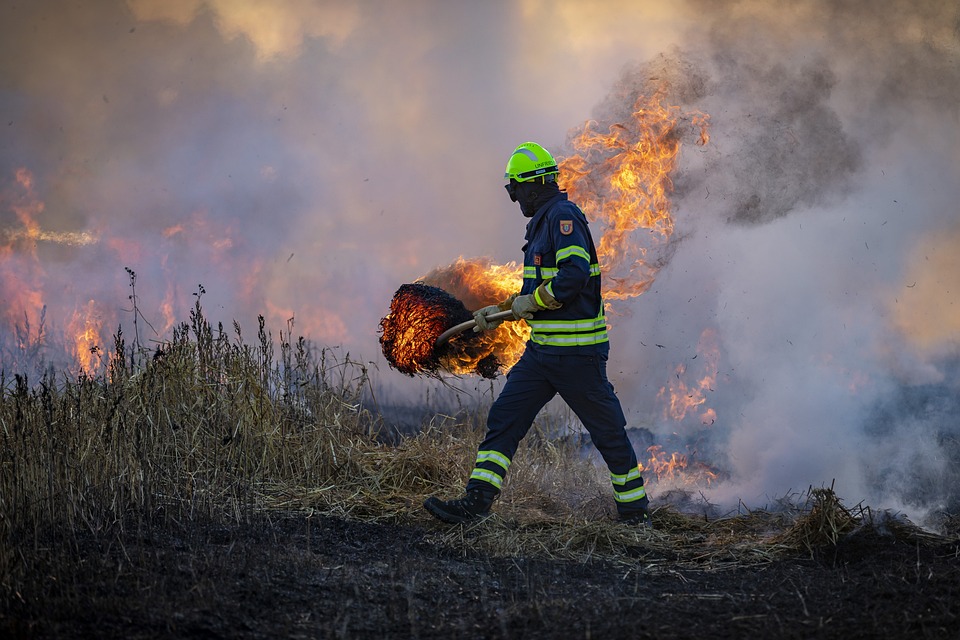The year 2025 has seen devastating wildfires ravage parts of California, leaving destruction and loss in their wake. Among the worst-hit areas is Los Angeles, where fires like the Palisades Fire have caused widespread damage, affecting thousands of families, homes, and businesses. With the fires still burning, it’s crucial to understand the impact of wildfires not only on the environment but also on human lives, the economy, and the future of the affected regions.
The Escalating Crisis: Impact of Wildfires in Los Angeles
In early January 2025, wildfires in California quickly became an urgent crisis, with more than 38,000 acres burning across Los Angeles County. The Palisades Fire, the most destructive among them, has become a symbol of the tragic consequences of these fires. As of January 11, the fire remains uncontained, spreading rapidly due to strong Santa Ana winds and dry conditions. Authorities are urging residents to evacuate as the fire has already destroyed over 23,000 acres of land, threatening thousands of homes. This particular blaze has become one of the largest in California’s history and has severely affected the Los Angeles area, with nearly 1,000 structures already lost.
The fire has also claimed lives, and at least 13 fatalities have been confirmed. Many residents are still missing or injured, adding to the emotional toll on the community. The immediate danger posed by the fires, along with the uncertainty of containment, has left many residents in a constant state of fear and anxiety. The reality of the impact of wildfires on human lives is stark and undeniable.
Human Cost and Displacement
The personal toll on families is profound. Thousands of families have been displaced, with evacuation orders affecting both residents in suburban areas and city dwellers. The Palisades Fire alone forced the evacuation of more than 10,000 people, with celebrities among those who had to flee their homes, including Leighton Meester, Adam Brody, and Paris Hilton. Many of the evacuees had to leave behind not only their homes but also irreplaceable belongings, such as family heirlooms, photos, and treasured mementos.
It’s difficult to imagine the emotional strain caused by such a disaster. The stories of loss and survival are heartbreaking, with some individuals recounting how they had only minutes to grab essentials and flee to safety. Communities that once flourished are now faced with the daunting task of rebuilding from the ground up. The impact of wildfires goes beyond just physical loss – the emotional scars will last for years, if not longer.
To learn more about evacuation zones and how to prepare for such disasters, check out the California Department of Forestry and Fire Protection.
Economic Ramifications: A Deep Financial Blow
Beyond the human toll, the economic impact of the wildfires in California is staggering. Local businesses, many of which were already struggling due to the ongoing effects of the COVID-19 pandemic, have been devastated. According to local authorities, insured losses from the Palisades Fire are expected to top $20 billion, with total economic losses potentially reaching as much as $50 billion.
For local residents, the loss of homes and businesses means not only the destruction of property but also the loss of income and livelihoods. For some, their businesses were their life’s work, and now they face the uncertain future of rebuilding or starting over. The city’s economy, already fragile, now faces additional strain due to the fires’ effects on tourism, retail, and local services.
Moreover, the state’s firefighting efforts are costly, with millions being spent on air support, fire trucks, and ground crews working tirelessly to contain the flames. But as the impact of wildfires continues to devastate the region, it’s evident that the economic recovery will take years, if not decades.
Environmental Consequences: An Ecological Crisis
While the loss of homes and businesses is deeply tragic, the environmental consequences of these fires are also far-reaching. The Palisades Fire and other blazes in the area have led to the destruction of valuable ecosystems, including wildlife habitats that are essential for California’s biodiversity.
The release of massive amounts of carbon dioxide into the atmosphere also exacerbates the climate change crisis. The impact of wildfires extends beyond the immediate region, contributing to the growing global issue of rising greenhouse gases. The ecological damage caused by these fires is not just a local problem – it’s a global one that affects us all.
Additionally, the fires have caused significant air quality issues, with smoke drifting across multiple states. The toxic air has forced schools, businesses, and public spaces to close in many affected areas. Health risks from breathing in smoke, ash, and particulates are real, especially for children, the elderly, and those with respiratory conditions.
The Fight for Survival: Emergency Response and Recovery
In the face of these challenges, the people of California have shown incredible resilience. The response to these devastating fires has been swift, with local, state, and federal agencies working together to contain the flames and assist evacuees. Firefighters from across the country have arrived to support their California counterparts in what has become one of the most intense wildfire seasons on record.
President Biden has approved federal disaster relief assistance, and communities are coming together to help those in need. Various non-profit organizations, local businesses, and individual volunteers have mobilized to provide shelter, food, and medical care to those affected by the fires.
Despite the overwhelming challenges, efforts are being made to rebuild and recover. The process will be long and difficult, but with determination, California will rise from the ashes once again. The impact of wildfires will continue to be felt for years, but through unity and hard work, there is hope for a brighter future.
The Road to Recovery: Rebuilding and Resilience
As the fires subside, the focus must shift to rebuilding the affected communities. The process of recovery will involve not only physical rebuilding but also emotional healing. Counseling services, financial support, and community efforts will be crucial in helping those who have lost everything find hope and rebuild their lives.
The lessons learned from this tragedy must be used to prevent future wildfires. Increased investment in fire prevention programs, better forest management, and more effective wildfire response strategies are necessary to mitigate the risks of future wildfires. The impact of wildfires on communities is profound, and ensuring that future generations are better prepared is essential for protecting lives and property.
California’s wildfires are a wake-up call to the world about the urgent need to address climate change and invest in sustainability. It is clear that wildfires are becoming more frequent and intense, and their effects will continue to shape our future. But with continued vigilance and action, we can minimize the damage and work toward a safer, more sustainable world.
Conclusion: The Ongoing Struggle
The impact of wildfires in California is a stark reminder of the fragility of our environment and the vulnerability of communities to natural disasters. As we watch the events unfold and witness the damage caused by these fires, we must ask ourselves: What can we do to prevent such tragedies in the future? The answer lies in collective action, innovation, and resilience.
As we move forward, let us remember the courage of those who are fighting to survive, rebuild, and recover. Together, we can rise from the ashes and build a future that is safer, more sustainable, and more resilient to the challenges that lie ahead.
For more information on the ongoing situation and safety measures, visit the California Department of Forestry and Fire Protection.


